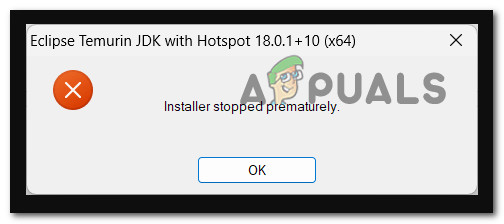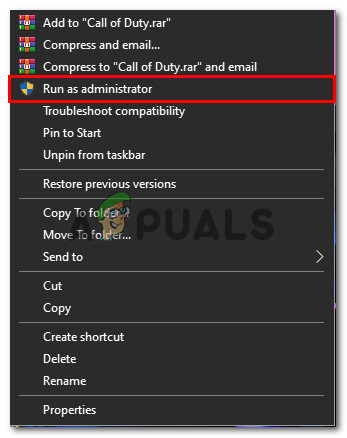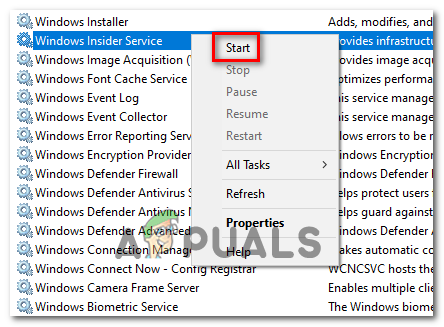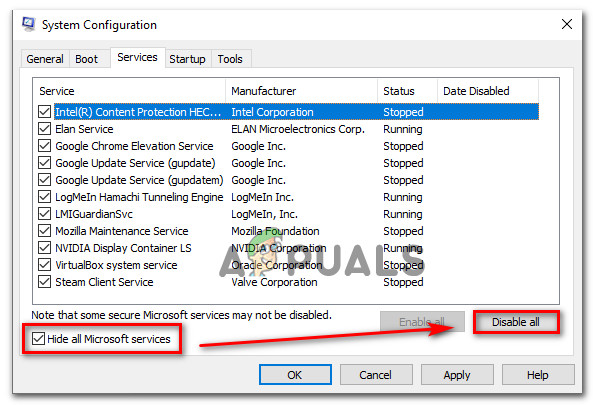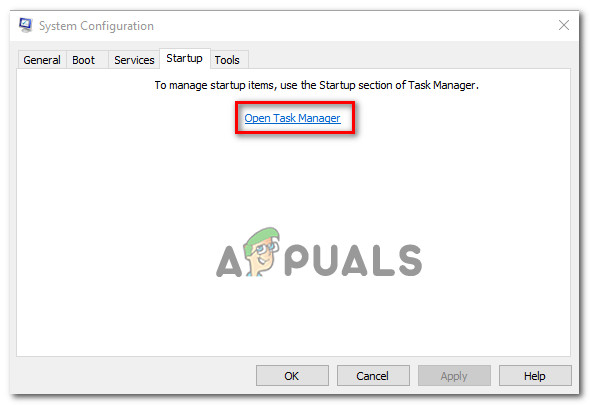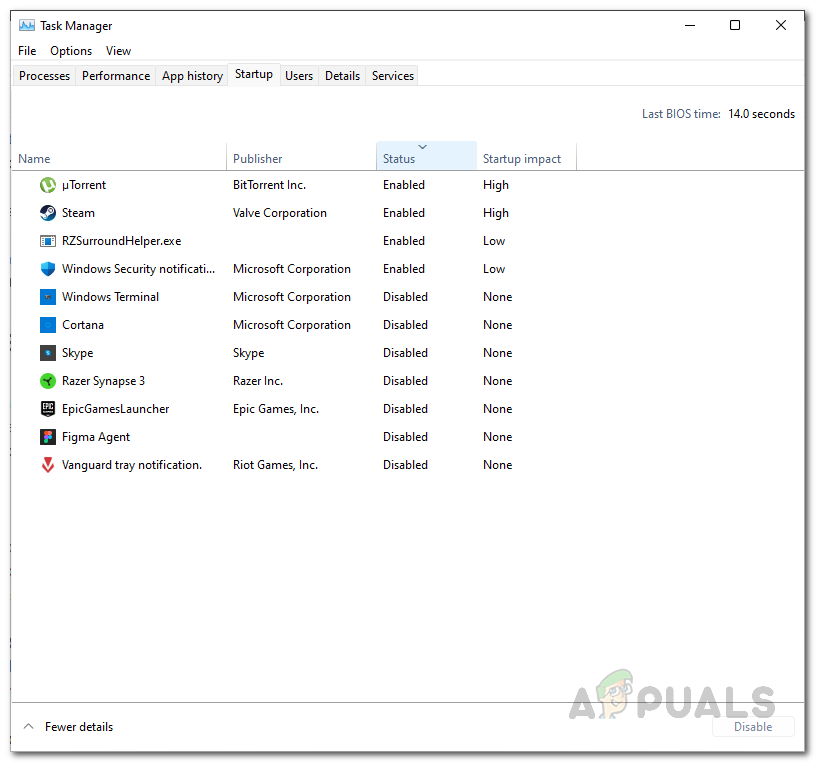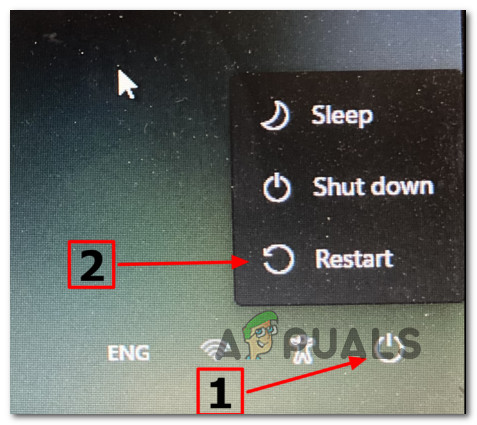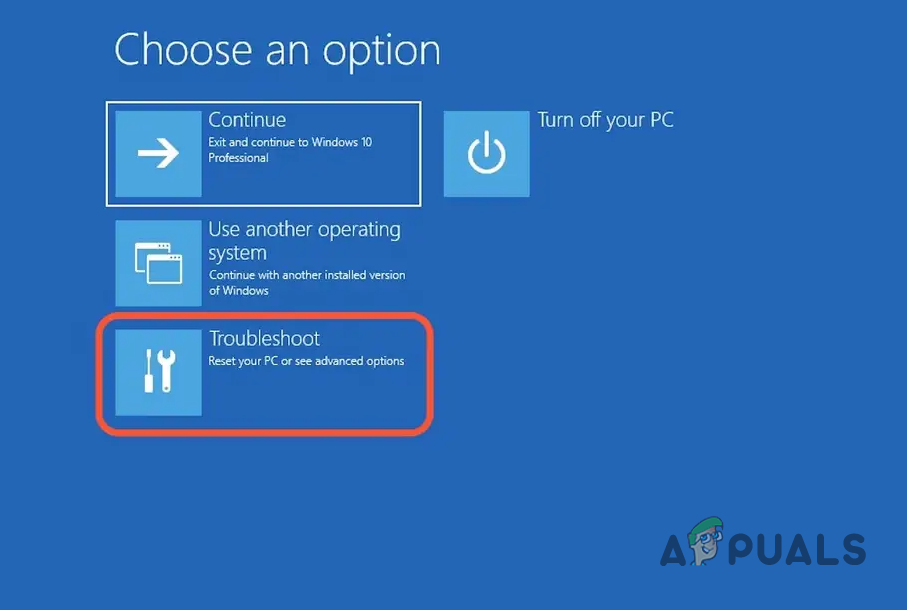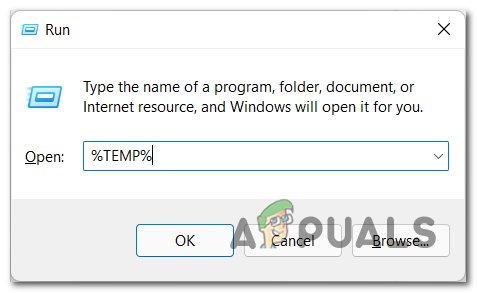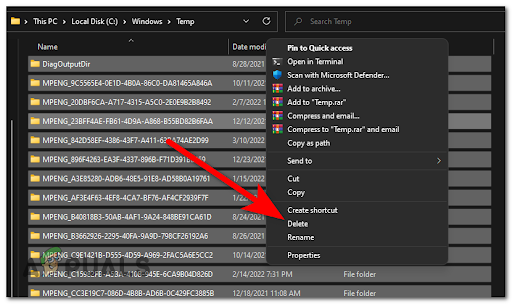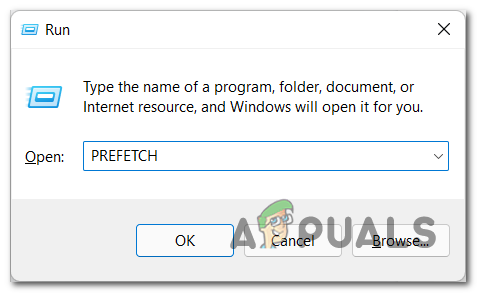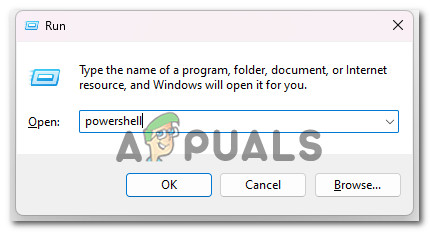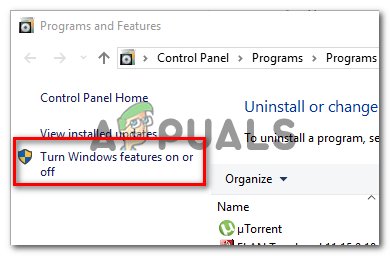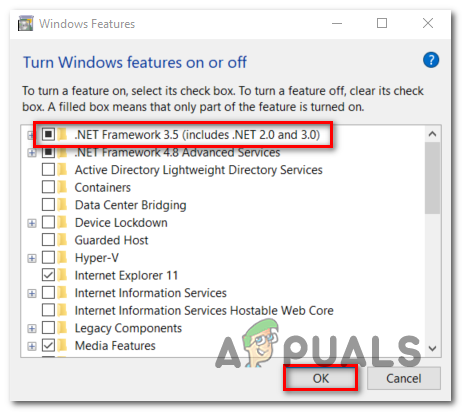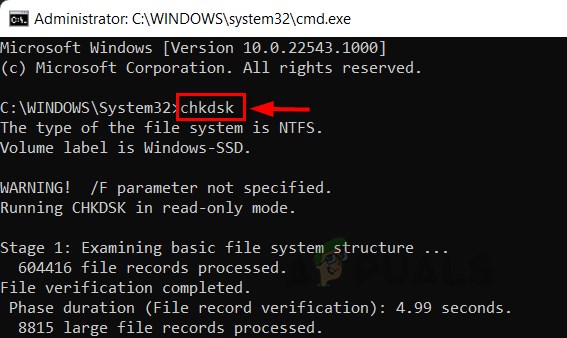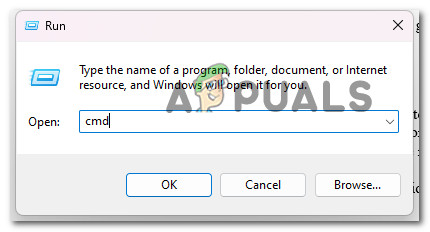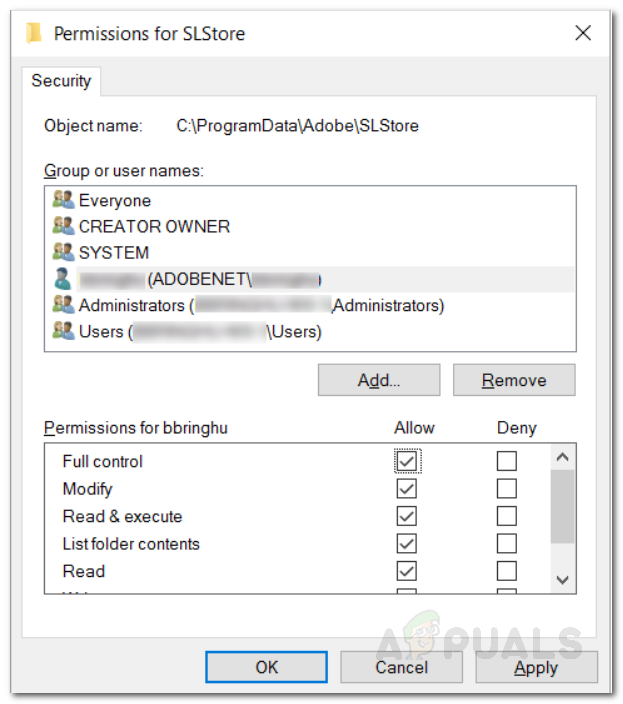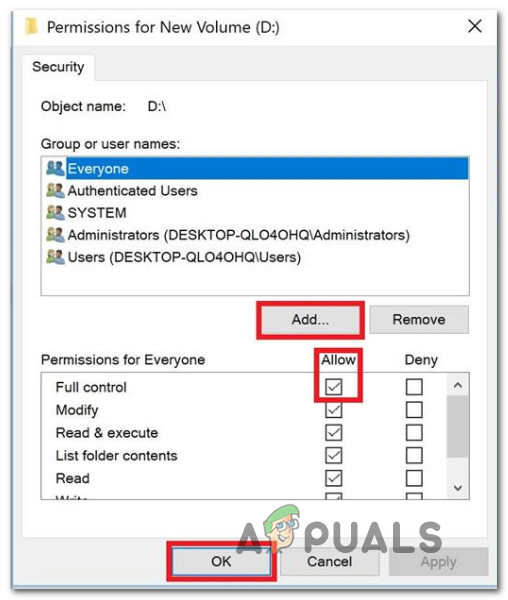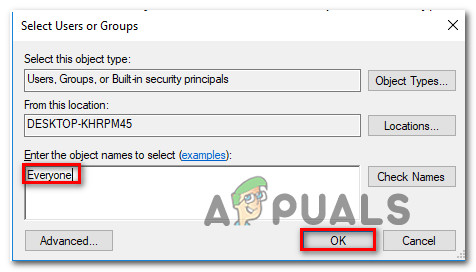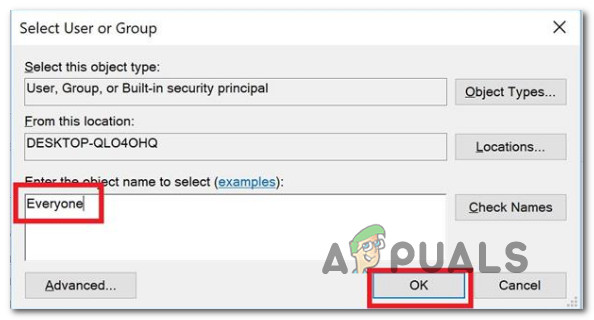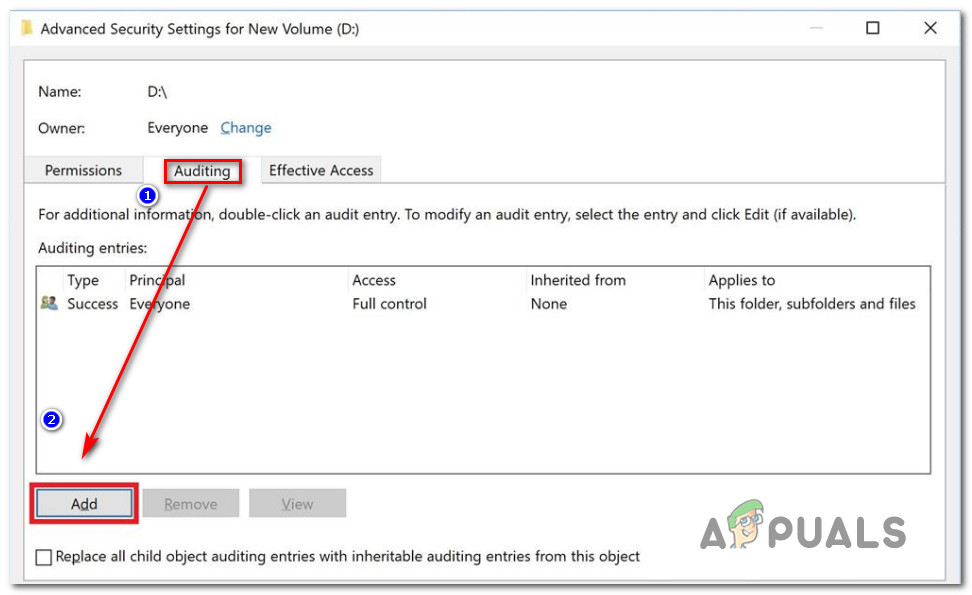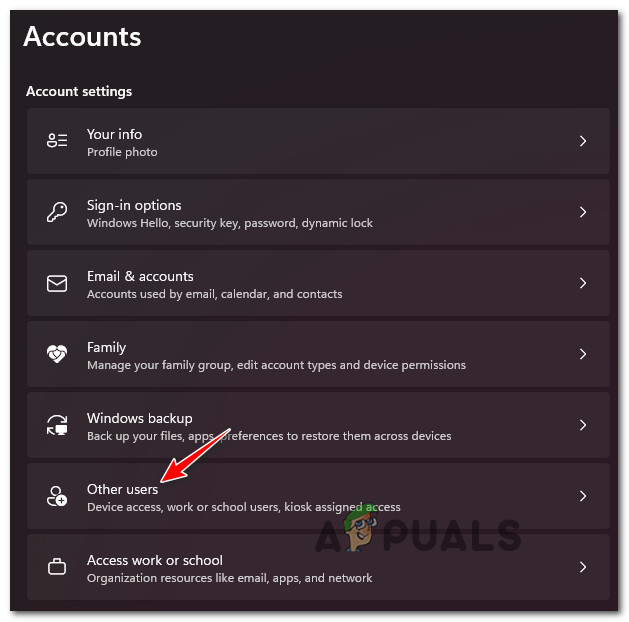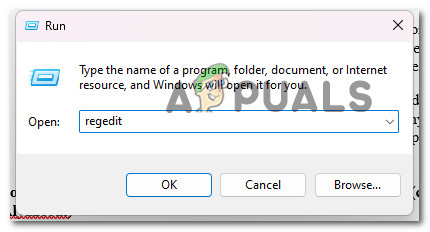After investigating this particular issue, we realized that there are actually several different underlying scenarios that might ultimately cause this error that will leave without the ability to install or uninstall Windows programs. Here’s a short list of scenarios that are most likely applicable: Now that we went over every potential scenario that might end up causing the ‘Installer stopped prematurely’ error, let’s go over every verified fix and see which one takes care of the error in your particular scenario.
1. Run the installation with admin access
If you’re experiencing this issue only when attempting to install a new program by double-clicking on the executable or the .msi installer, the first thing you should do is ensure that it runs with admin access. To do this, simply right-click on the file that is supposed to install the program and click on Run as administrator from the context menu that just appeared. At the User Account Control (UAC), click Yes to grant admin access, then carry out the installation normally and see if you can complete the process without experiencing the same ‘Installer stopped prematurely’ error. If the problem is still not fixed, move down to the next method below.
2. Start the Windows Installer Service
Another documented cause of this issue is when the Windows Installer (the primary service responsible for software installation and removal) is deactivated from the Services panel. To remedy this, go to the Services utility and check sure the service is enabled. In other scenarios, the Windows Installer service might become caught in limbo and cannot be contacted by the OS sub-component that requires it in most situations, resulting in this difficulty. If this situation applies, you may quickly resolve the problem by starting or restarting the Windows Installer service. Here’s what you need to do: If the same kind of issue is still occurring, move down to the next method below.
3. Clean boot your Windows installation
As it turns out, a 3rd party conflict might also be responsible for the apparition of this particular issue. In most cases, the ‘Installer stopped prematurely’ error is caused by a process belonging to a different 3rd party suite. If this scenario is applicable, you should be able to fix the issue by booting in clean boot mode to investigate for a software conflict and isolate the service or process that’s causing the problem. This operation was confirmed to be effective for a lot of affected users. Note: Keep in mind that by achieving a clean boot state, your computer will boot without any 3rd party services, processes, and startup items that might contribute to the apparition of this error. The following are the step-by-step steps for achieving this clean boot state: If the problem is still not fixed even after you achieved a clean boot state, move down to the next method below.
4. Carry out the installation in Safe Mode
There are several third-party services and procedures that might eventually create this issue. If you’re having this problem with every.msi installer you try to open, this is much more likely. If the above-mentioned clean boot procedure does not work, you can try booting in Safe Mode. Note: There are several potential culprits that might interfere with the installation or removal process, but system optimization suites and backup software are the most usually reported offenders. If you only get the ‘Installer halted prematurely’ problem while trying to remove or install the software in Windows 11 or Windows 10, but you can boot properly, booting in Safe Mode will prevent 3rd party services and services from interfering with the procedure. If this scenario appears to be appropriate, please see the directions below for detailed information on how to proceed: If the problem is still not resolved, move down to the next method below.
5. Clear the Temp & Prefetch folder
The temp folder, it turns out, is prone to store temporary files, which might interfere with your PC’s ability to install or uninstall programs and software dependencies. Try wiping out your Windows transient folder to resolve this problem. Other customers who were experiencing the same issue said that they were able to resolve the issue by removing all of the files in the TEMP, percent TEMP percent, and PREFETCH folders. If you’re not sure how to remove those directories, here’s a step-by-step guide: In case the problem is still not resolved, move down to the next method below.
6. Re-Register VBScript.dll and the Windows Installer service
A recent antivirus check, a system restore operation, or another system update might potentially cause the de-registration of the VBscript.dll or the Windows Installer service (or both). You’ll need to re-register both components from an elevated Powershell window to fix this problem. This method has been confirmed to be effective by a lot of users that were previously unable to install or uninstall any program on their Windows computer. There are multiple ways that will allow you to do this, but our recommendation is to do it from an elevated Powershell command. Follow the instructions below for specific instructions on how to do this: If the same problem is still occurring, move down to the next method below.
7. Enable .NET Framework 3.5
Another reason you can get this problem is if a critical installation dependency (.NET Framework 3.5) is truly deactivated at the system level. To repair it, go to the Programs and Features menu and activate it. Keep in mind that Windows 10 has a.NET Framework 3.5 archive, and Windows 11 includes a.NET Framework 4.7 version; all you have to do is ask them to install it. When using the Windows features screen, some impacted customers who were previously encountering the ‘Installer halted prematurely’ error while trying to install an update or program that relied on the.NET Framework noted that the installation went well. To install the.NET Framework 3.5 or 4.7 through the Windows Features panel, follow the instructions below: If the problem persists, proceed to the next possible solution below.
8. Deploy a CHKDSK Scan
In certain circumstances, you might find this error occurring when you’re using a traditional storage device (HDD) and certain storage blocks are beginning to fail. In order to get this fixed, you can try running a CHKDSK scan and replacing the corrupted sectors with unused equivalents. Try conducting a CHKDSK scan from an elevated CMD prompt to rule out this possibility. Fortunately, Windows’ built-in CHKDSK application can search for faults and corruptions, as well as fix any logical errors and damaged data that a violent deletion attempt may have left behind. Open CHKDSK in an elevated CMD window to give it the rights it needs to fix damaged files. Note that the instructions should work regardless of the version of Windows you’re using. If the same ‘Installer halted prematurely’ problem persists after running a CHKDSK scan, proceed to the next method below.
9. Deploy an SFC & DISM Scans
If you’ve previously tried resetting the Windows Update component and are still getting the same error, you should at least suspect that you’re dealing with a system file corruption problem. In this instance, you should try to replace the damaged files that are hindering the upgrade to Windows 11 and produce the ‘Installer stopped prematurely’ error with every available program. To replace faulty system files with healthy equivalents and failed storage sectors with unused equivalents, perform SFC (System File Checker), DISM (Deployment Image Servicing and Management), and CHDSK (Check Disk) scans in fast succession. Follow the steps below for detailed guidance on how to achieve this: If you’re still dealing with the same ‘Installer stopped prematurely’ error, move down to the next method below.
10. Grant full permission to System account (if applicable)
If you’re using an older Windows version (older than Windows 7), you might deal with this scenario in situations where the System folder doesn’t have Full Control permissions on the folder you are attempting to install the Windows Installer package to. If this scenario is applicable, you should be able to resolve the problem by accessing the System account and granting Full Control permissions. For complete instructions on how to do this, follow the steps below: In case you’re still dealing with the same ‘Installer stopped prematurely’ error, move down to the next method below.
11. Uninstall with a 3rd party tool
If every.msi installer fails with the same issue and you don’t want to replace your operating system, you may use a third-party application to continue uninstalling apps that are failing with the ‘Installer stopped prematurely’ error without having to repair the underlying reason. There are several solutions accessible on the internet that allow you to thoroughly delete an app. These programs will scan your computer’s Windows for all files and entries associated to the software, then delete any traces. As a result, utilize third-party solutions to thoroughly delete the program. The following is a list of free uninstaller programs:
IObit UninstallerWise Program UninstallerGeekUninstallerRevo Uninstaller Free
Decide on a tool that you wish to use to get this done, then carry out the uninstallation and see if you are able to bypass the ‘Installer stopped prematurely’ error. If the same kind of problem is still occurring, move down to the next method below.
12. Use a new Windows account
If you’re having this problem with every.msi installer you try to run, it’s possible that it’s being caused by a problem with your Windows account. Several customers who have had the same issue have stated that establishing a new Windows account solved the problem permanently in their situation. Important: This operation will erase any existing damaged dependencies linked with your current user profile. If you haven’t already done so, follow the steps below to establish a new user account in order to get around the ‘Installer halted prematurely’ error: If the problem is still not fixed, move down to the next method below.
13. Delete the duplicated Registry key
As it turns out, you could run into this problem if you have one key (B54F3741-5B07-11cf-A4B0-00AA004A55E8) that is improperly duplicated under HKEY CURRENT USER. If this case applies, you may resolve the issue by deleting the repeated key and resolving the dispute in the Registry Editor. Several affected users have revealed that using Registry Editor to rename the registry entry under HKCU and rerunning the installer allowed them to avoid the ‘Installer halted prematurely’ error. Follow the instructions below for instructions below: If the same ‘Installer stopped prematurely’ error is still occurring, move down to the next method below.
14. Run a clean install or repair install
If none of the aforementioned methods have worked, you only have one option: go nuclear and replace all of the affected system file dependencies with healthy equivalents. Your only options, if you have system file corruption, are to execute a clean install or a repair install (in-place upgrade).
Repair install (in-place upgrade) – If you have the choice, if you’re trapped in this circumstance, this is our official suggestion. During a repair install (in-place upgrade), only the system files will be modified (while keeping your personal files, user preferences apps & games)Clean install – If certain kernel processes are affected, a clean install may be the best option, but it comes with the drawback of erasing any personal data kept on the OS drive. You should be informed, however, that if you choose this option, you will lose all of your personal data.
FIX: NSIS error “Error launching installer"How to Fix the ‘Windows Push Notification User Service has Stopped Working’…How to fix ‘Sivinit Has Stopped Working’ Error on WindowsFix: Windows System Assessment ‘winsat.exe’ tool has stopped working Error
